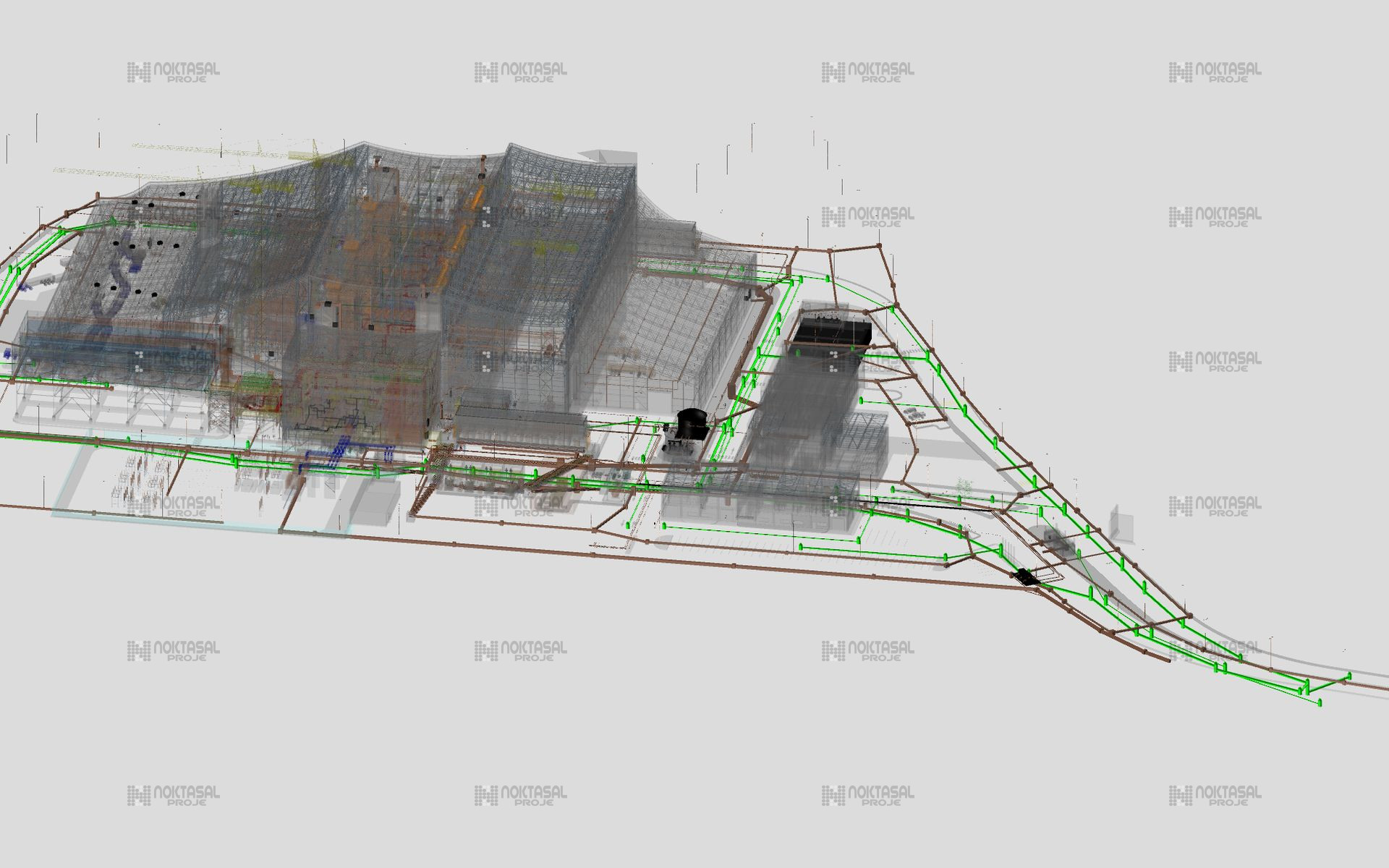WASTE INCINATION AND ENERGY PRODUCTION FACILITY INFRASTRUCTURE PROJECTS

Waste Incineration and Power Generation Plant Infrastructure Projects
3D Infrastructure Modeling Studies with Drinking Water, Sewage, Stormwater and Road Precise Projects
Within the scope of the Waste Incineration and Energy Production Facility project implemented by Istanbul Metropolitan Municipality in Kemerburgaz – Işıklar Neighborhood, Dotasal Proje Mühendislik has prepared the drinking water, sewage, stormwater and road precise projects necessary for the creation of sustainable infrastructure systems of the facility in accordance with engineering principles and current standards; all projects have been supported by a three-dimensional digital infrastructure model.
The Purpose of the Project and the Infrastructure Requirement
Infrastructure systems to meet the environmental, technical and operational requirements of this facility, which is one of the largest in Europe with a daily domestic waste incineration capacity of 3,000 tons and an energy production of 85 MWh, have been handled by Point Project Engineering with a holistic approach. The projects have been developed based on the principles of waste management – energy production – infrastructure integration.
Prepared Infrastructure Systems
1. Drinking Water Projects
The plant's drinking water needs are provided through new lines integrated into the ISKI main network,
- Daily water consumption has been calculated by taking into account process usage and personnel needs.< / li>
- High-capacity pipes were used for uninterrupted supply; warehouse connections, branch points and counter structures were designed.Jul.< / li>
- The entire system has been modeled in 3D, and conflicts with the structural infrastructure of the facility have been analyzed in advance.< / li>
2. Sewage (Wastewater) Projects
Domestic and process wastewater from the facility has been designed to be collected by separate lines and directed to pre-treatment and then to ISKI infrastructure.
- Sealed pipe systems, high-strength fasteners and maintenance chimneys have been used along the lines.< / li>
- The sewer network is designed according to the treatment capacity in accordance with the European Union environmental standards.< / li>
3. Rainwater Projects
A rainwater drainage system has been established for surface flows from plant roofs, field roads and open areas.
- The system completely covers the plant area with grid, drainage channel, manhole and collector lines.< / li>
- Rainwater is separated from wastewater lines and reused in the facility (landscape irrigation, etc.) for the purpose of storage planning has been made in some sections.< / li>
4. Road and Transportation Projects
Durable main transport routes for heavy tonnage vehicles, access roads for employees and visitors, environmental service roads have been designed.
- Road platforms are designed according to geometric design principles and traffic loads; edge details, curbs, intersection turning angles and parking arrangements are detailed.< / li>
- Stormwater drainage grids, sidewalks and barriers are integrated into road sections as elements that support road safety.< / li>
3D Modeling and Coordination Studies
All infrastructure systems have been prepared not only with two-dimensional drawings, but also in a three-dimensional digital modeling environment. Thanks to these modeling studies:
- The risk of conflict between infrastructure systems and each other and the foundations of structures has been eliminated.< / li>
- Ease of field application was provided before the construction process; excavation-filling volume optimizations were made.< / li>
- Thanks to detailed modeling, a digital infrastructure guide has been created for maintenance, repair and operation processes.< / li>
Contributions of the Project and Emphasis on Sustainability
- The disposal of 1 million tons of waste per year significantly reduces the need for landfill space; saves about 100 hectares of space.< / li>
- The energy produced is equivalent to the annual electricity needs of about 1.4 million people.< / li>
- The environmentally friendly infrastructure of the facility provides a climate-friendly model by preventing annual CO₂ emissions of 1.38 million tons.< / li>
Result
Dotasal Proje Mühendislik has successfully completed the infrastructure projects of the Waste Incineration and Energy Production Facility, which is of symbolic importance in the sustainable energy transformation of Istanbul; it has carried out an innovative engineering process that combines every component of the infrastructure with technical accuracy, environmental compliance and digital coordination.
The prepared projects have been planned in accordance with the principles of long-lasting infrastructure, minimum environmental impact and maximum functionality; they have been integrated with all structural and environmental functions of the facility thanks to 3-dimensional modeling.
